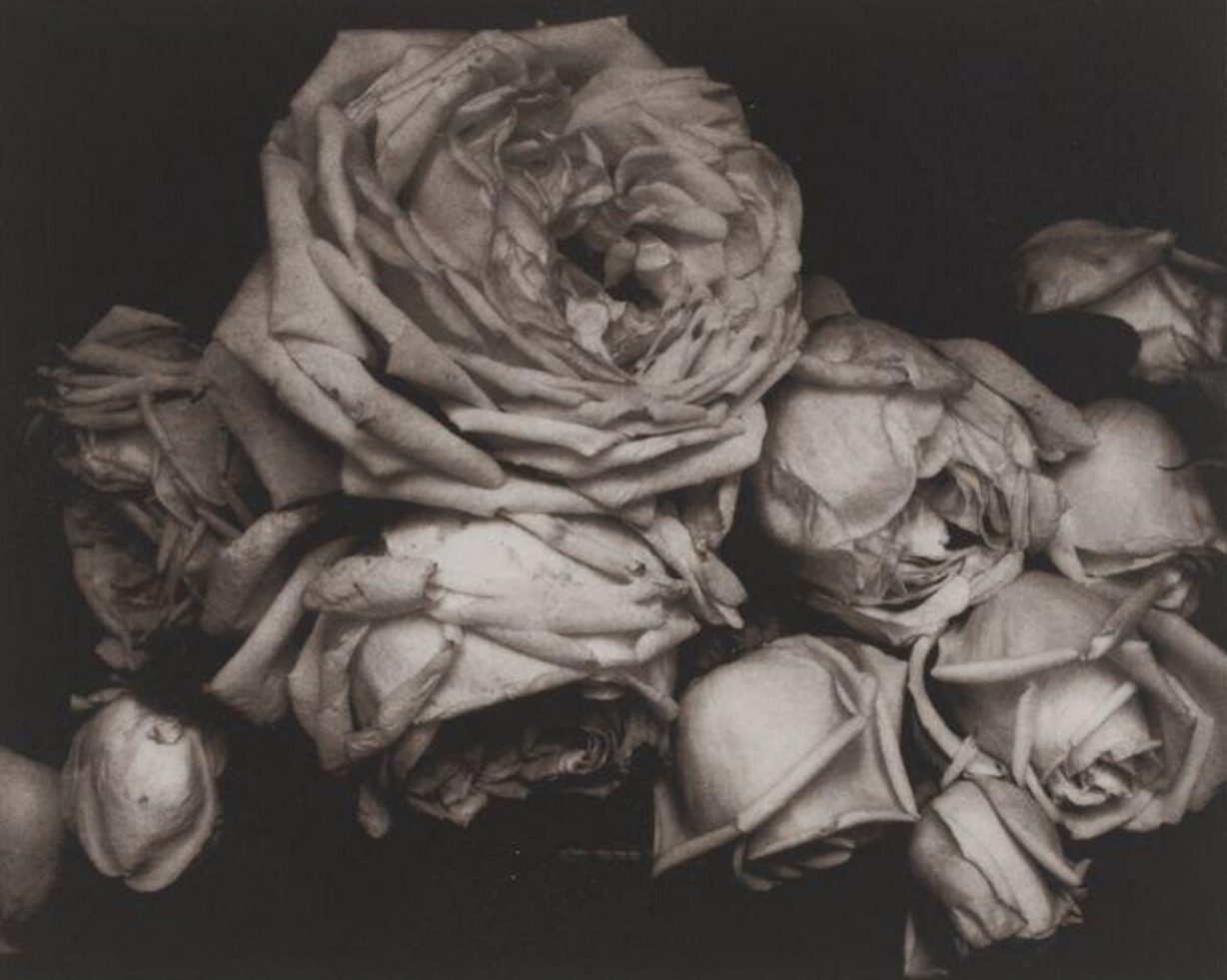Rose enthusiasts are a broad and diverse group. The rarity, ephemeral beauty, challenge of growing and the transient nature of blossoms have conquered the hearts and hands of thousands. Plant hunters, artists, eccentrics and of course countless gardeners have all been beguiled by the rose. These are a few of my favorites.
Edward Steichen: Heavy Roses, 1914

Heavy Roses was one of the last photos taken by Edward Steichen before fleeing France before WWI. I can’t remember where I first saw the image, but I purchased a framed poster image and decorated my apartment in college. I think the image of fading roses has influenced how I feel about them as I often leave arrangements while their petals drop.
Anne Vallayer-Coster: Two Roses, 1810

Anne Vallayer-Coster learned to paint from her father, Madeline Basseport, illustrator and decorator to Madame de Pompador and Joseph Vernet, painter of marine subjects. She became a member of the Academie and her work later drew the attention and sponsorship of Marie Antoinette. It was not until 2002/2003 that the first retrospective of her work brought her to New York’s Frick Museum, where I saw a number of her works for the first time.
Henri Fantin Latour: Roses & Lilies, 1888

It took an Englishman to name a centifolia rose after the French painter Henri Fantin-Latour. With over 700 floral still lifes to his credit, the ones that I am always drawn to are the small arrangements in glass vases. Fantin-Latour died at the age of 68 in his rose garden in Bure, France.
Pierre Joseph Redoute


Pierre Joseph Redoute owes his fame to his skill and his royal patronage. When Empress Josephine purchased the Chateau de Malmaison with its jardin anglais, she gave Andre du Pont full reign to secure specimens for her garden. Redoute was given the charge to paint and record them all which subsequently produced Les Roses, a volume which has been reproduced by engravers around the world. If you would like to learn more find a copy of THE MAN WHO PAINTED ROSES, BY Antonia Ridge, a page turner for rose lovers.
J. Horace McFarland

Author and publisher J. Horace McFarland gained notoriety with his “crusade against ugliness’ as he visited 400 cities around America raising awareness for beautification. McFarland adopted a democratic approach to rose growing and encouraged the American Rose Society to expand its membership beyond commercial growers to homeowners, novices and backyard gardeners. As a result of his life’s work the American Rose Society, 100 years later, bestowed him the title, Father of the American Rose Society.
Constance Spry

Constance Spry inspired a generation of floral designers with her unique aesthetic by combining exotic blossoms with woodland finds. One of David Austin’s first roses, the fragrant and hardy ‘Constance Spry’ was named for the ‘floral decorator’ the year after her death.
Norah Lindsey, The Parterre Garden at Blickling Estate, Norfolk

Norah Lindsay, a collector of roses, became a professional gardener at age 52 as a result of divorce. Her royal friendship with the Prince of Wales aside, Norah was not one to recoil from the dirty work her newfound profession required. As many of the intrepid British female travelers before her Norah made her way to Iran and discovered roses and other flowers. Rosarian Graham Stuart Thomas generously describes one of her discoveries in his famous book of 1994, “the attar -of -roses”…with ambrosial flowers of translucent pink’.
Explorers
The late 19th century spawned a particular streak of curiosity and a need for adventure in the hearts of some Americans, David Fairchild amongst them. The son in law of Alexander Graham Bell, Fairchild made his mission one of exploration in an effort to discover new foods for the American table and set off to the far corners in that quest. We can thank him for soybeans, avocados, and honeydew melons. Missionaries in China such as Ernst Faber and Ernest Henry “Chinese” Wilson were responsible for rose discoveries introduced into American and European nurseries and arboretums. Wilson alone was responsible for the introduction of over 400 plant varieties including 70 roses. We owe a debt of gratitude to these audacious souls who at the onset of the new globalization returned with exciting discoveries for our table and our gardens.
Probably one of the first roses to travel from America to be introduced in England was the vigorous ‘Virginia Rose.’ A record of this rose was found in the records of the London Garden owned by the Tradescants, John the Elder and his son. Described as the forefather of the modern garden, the first to open a museum to the public, the Elder travelled to four continents in search of plants and trees. His gardening career began with an auspicious start at Hatfield House and also included Oatlands, home of Henrietta Maria, Queen to Charles I. John the Elder is buried at St. Mary -at – Lambeth, the home of the Garden Museum in London, a most fitting resting place.








